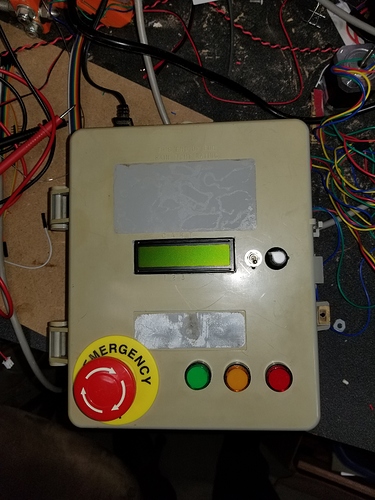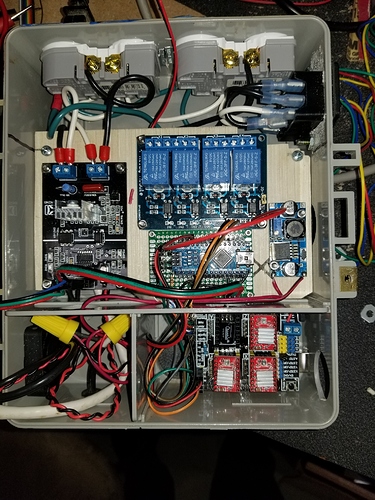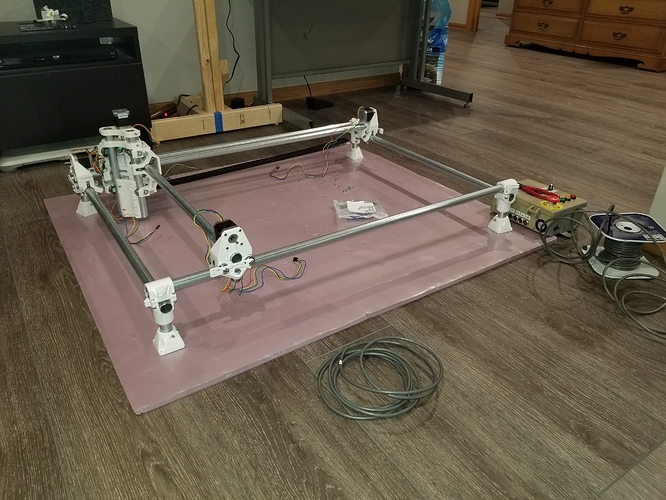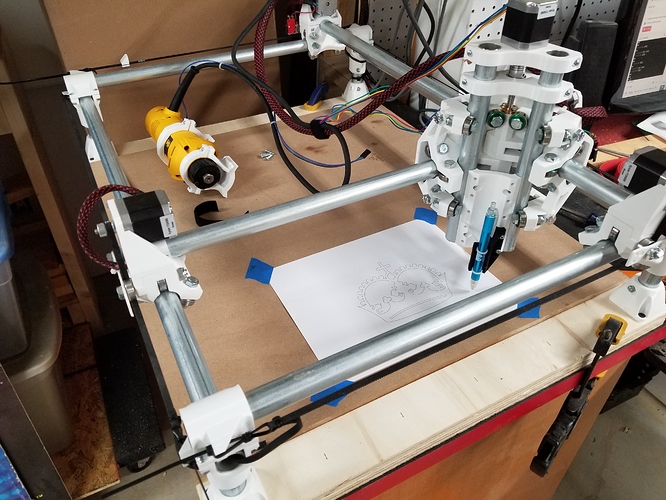I’ve been posting bits in other sections, but realized I hadn’t started a “My Build” thread, so here it goes.
Initial planned use is wood working and cutting out foam aircraft for R/C. We’ll see where it takes us one those use cases are nailed down. Inlays look very intriguing, expect I’ll be trying them pretty quickly.
US build, so imperial units, at least until I get to gcode. Planned working area is 21"x31" (full sheet of dollar tree foam board plus a little wiggle room) with a 3" Z, using 3/4 conduit. Rails and legs are all cut, printed part sub-assemblies are all together and the bearings seem to fit around the tubes correctly. I put the assembly on hold while I think through table options. Probably going to want a folding/rolling table, as shop space is not unlimited. For the spoil board, I’m thinking removeable/flippable spoil board with one flat side for vacuum hold-down of the foam and dovetail slots routed in the other for flexible work clamping over a “drop table” to allow room for taller work pieces.
For controls, I’m using a CNC Shield 3.0 clone/Arduino Uno combo that’s been on my shelf for a while. I used the same hardware to replace the brains in my K40 laser, so I’m comfortable with the platform. This will work with GRBL 1.1, but you need to understand that the silkscreen on the board doesn’t match what some of the pins do any more because the had to shift pins to get PWM working.
I’ve got the PWM “developer kit” from the V1 store for spindle speed control and I’ve added a switch to allow manual speed control via a 10K potentiometer, There’s also a 4-channel relay board (also been on the shelf for a while) and a buck converter to lower the 7 amp 19V DC from a laptop power supply that feeds the steppers to 12 V for a case fan and possible LED’s at the bottom of the Z axis.
I’ve got the V1Pi image up and running, so with CNC.js operational I’m not worried about not having a graphical control UI on the machine itself. The GRBL shield provides for Cycle Start, Pause, and Cancel buttons so I’ve got illuminated buttons for them on my control box. The normally-closed side of the big E-Stop will kill all AC power into the box, stopping all relay controlled accessories as well as the outlet the laptop supply plugs into. The GRBL board also supports an E-Stop to reset the controller, so if tests after assembly show it doesn’t stop fast enough, I may hook the normally open side of the E-Stop to those pins as well since the arduino is still powered through USB even when all AC power is cut off.
I’ve been concentrating the last couple of days on getting the “brain box” put together and wired up. As of last night, almost everything was operational in a bench test via CNC.js
- GRBL start, pause, cancel buttons worked
- X-Y-Z motors turned
- M3 turned on a desk lamp plugged into the spindle outlet
- Changing the RPM dimmed the bulb
- The PWM cutover switch and pot also dimmed the bulb
- Relay lights responded to M7, M8, and M9
Just need to crimp some more connectors to get the LCD wired in and add the sensor wiring to hook up the spindle for a test run.
Here’s a couple of pictures of the controls, shoehorned into an old outdoor electrical control enclosure that’s also been kicking around the shop for a while. (Anyone else sensing a theme?)
Steppers, limit switches, and RPM probe wires will feed through the left side of the box using some 6-conductor cabling that should make setting up modular wiring runs pretty easy.That’s a standard IEC fused power inlet on the right side, so I don’t need to use the E-stop as the main power switch. I will be putting protective coverings over the hot leads for the outlets along the top once the relay wiring is complete, and getting some slightly more elegant DC power connectors to replace the yellow wire nuts. Most of the power wiring runs beneath the plywood that the circuit boards are mounted to.
Now to figure out the table so I can get the whole machine put together.



